Understanding surfboard shapes is key for new surfers. Longboards offer stability and floatation for learning, while shortboards are agile and dynamic for experienced riders. Fish and fun boards bridge the gap, suitable for intermediates. Hybrid boards combine longboard stability with shortboard maneuverability. Tail shapes like drop-kinetic or pin tails enhance performance in different wave conditions. Custom surfboards cater to individual styles and abilities, optimizing stability and enjoyment. The right board shape ensures beginners can focus on learning techniques, catch waves, and have fun in the water.
For surf enthusiasts, choosing the right surfboard shape is key to enhancing performance and enjoying every ride. This guide, tailored for beginners, explores a variety of surfboard shapes designed for different skill levels and surfing conditions. From the stable longboard ideal for newcomers to the agile shortboard suitable for advanced maneuvers, each design offers unique benefits. Discover how hybrid models strike a balance between stability and speed, and learn about drop-kinetic tails for versatile performance. Understanding these shapes will empower beginners to select their perfect surfboard match.
Understanding Surfboard Shapes: An Overview for Beginners
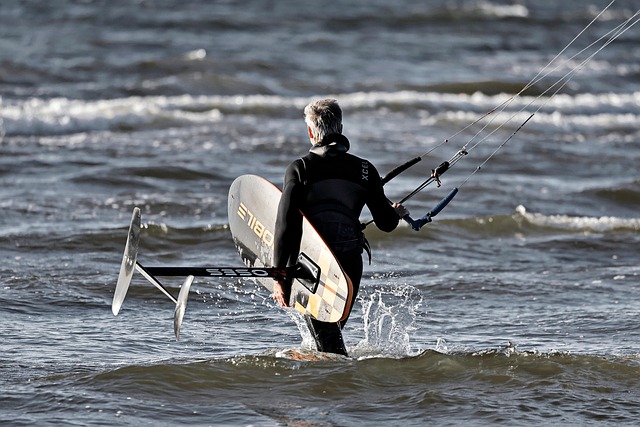
For beginners dipping their toes into the world of surfing, understanding surfboard shapes is a crucial first step. Surfboards come in a variety of forms, each designed to cater to specific surfing styles and conditions. A beginner-friendly board often features a rounded nose for stability and easier catch on waves, while the tail can range from square to pointy, affecting the board’s maneuverability.
The shape also influences the board’s buoyancy and speed. Broad, flat sections provide more floatation, making it ideal for smaller or weaker surfers. Conversely, narrower boards offer greater agility, better suited for experienced riders hunting faster, more intricate maneuvers. Choosing the right surfboard shape is key to enhancing performance and enjoying the ocean to its fullest as a novice surfer.
The Classic Longboard: Stability and Gliding for New Surfers

For those new to the world of surfing, choosing the right surfboard can make all the difference in their learning experience. One classic option that stands out as an excellent choice for beginners is the longboard. Designed with stability and smooth gliding in mind, these boards provide a more relaxed and controlled ride, allowing newcomers to focus on mastering the basics without feeling overwhelmed by speed or maneuverability.
Longboards typically feature longer and wider shapes, which not only make them easier to balance on but also offer more floatation in the water. This stability is crucial for beginners who are still developing their skills, as it gives them the confidence to catch waves consistently and improve their technique at a comfortable pace. With its classic design, the longboard offers a unique surfing experience that can be both calming and exhilarating, serving as an ideal surfboard for beginners looking to explore the ocean with ease.
Shortboards: Agility and Speed for Advanced Maneuvers

Shortboards are a popular choice among experienced surfers looking to perform advanced maneuvers with agility and speed. Designed with a shorter length and wider nose, these surfboards enable quick turns and sharp cuts, making them ideal for dynamic surfing styles. For beginners, however, the shortboard’s specialized design can be challenging to master, as it requires a higher level of balance and control.
Surfing on a shortboard offers a unique surfing experience, allowing surfers to carve elegant arcs in the waves and execute powerful maneuvers like cutbacks and snaps. Its versatility makes it suitable for various wave conditions, from gentle rollers to more challenging breaks, further enhancing its appeal among advanced surfers.
Fish and Fun Boards: Versatile Options for Intermediate Riders

Fish and fun boards offer a fantastic blend of versatility and performance, making them ideal choices for intermediate surfers looking to enhance their skills. These surfboards cater to those who want to enjoy waves with confidence and ease. With their unique hybrid design, they provide an excellent balance between stability and maneuverability, allowing riders to catch more waves and try new tricks.
For beginners transitioning from smaller boards, a fish or fun board provides the next step in progression. Their wider shape and longer length offer better control and buoyancy, enabling intermediate surfers to focus on refining their techniques without worrying about staying afloat. These boards are perfect for various wave conditions, from gentle breezes to more challenging surf, making them a popular choice for surfers seeking versatility.
Hybrid Designs: Combining Stability and Performance
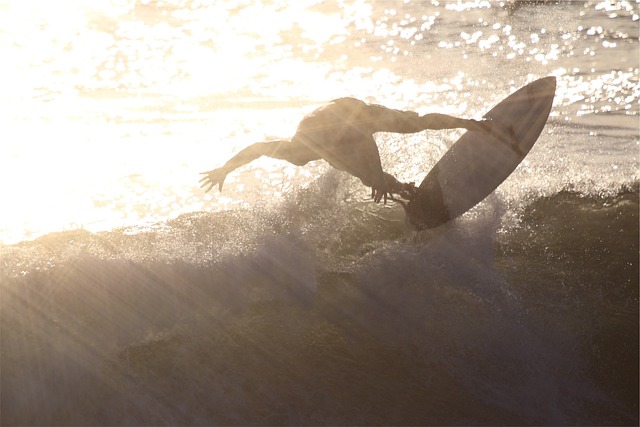
Hybrid designs in surfboards offer a unique blend of stability and performance, making them an excellent choice for both seasoned surfers and those just starting their journey on the waves. These boards are crafted with advanced technologies that combine the best features of different shapes, resulting in versatile equipment suitable for various surfing conditions. For beginners, hybrid surfboards provide enhanced stability, crucial for building confidence as they master the art of riding the ocean.
The design incorporates elements from both longboards and shortboards, creating a board that is efficient and maneuverable while still offering the floatation needed to catch waves easily. This versatility allows beginners to adapt to different wave heights and conditions without having to invest in multiple boards. Whether navigating gentle waves or catching more challenging breaks, hybrid designs provide a seamless transition from learning to more advanced surfing techniques, making them an ideal choice for surfboard selection among newcomers to the sport.
Drop-Kinetic or Pin Tail: Exploring Unique Shapes for Different Surf Conditions
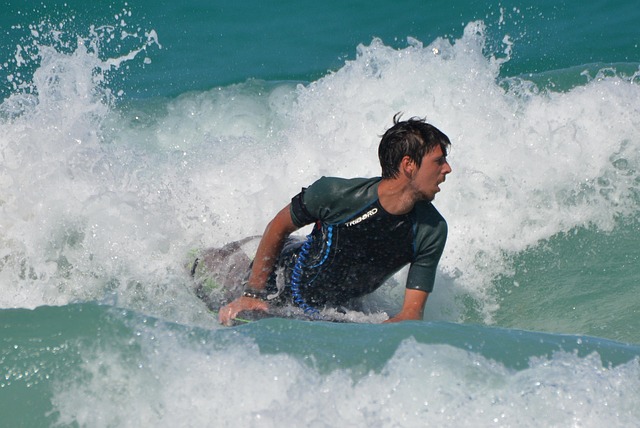
When it comes to choosing a surfboard, one of the key considerations is the shape, which can significantly impact performance in various wave conditions. For beginners looking to explore different surfing scenarios, understanding the options available is essential. One such category is drop-kinetic or pin tail boards, known for their unique design and versatility.
Drop-kinetic shapes feature a distinctive tail that tapers down to a point, creating a more hydrodynamic profile. This design is ideal for larger waves as it allows for sharper turns and easier cutbacks. On the other hand, pin tails have a pointed end with no taper, offering enhanced stability in smaller surf. Beginners can benefit from these boards’ maneuverability and speed, making them suitable for learning various surfing techniques in different wave environments.
Customization: Personalizing Your Board's Shape for Optimal Performance
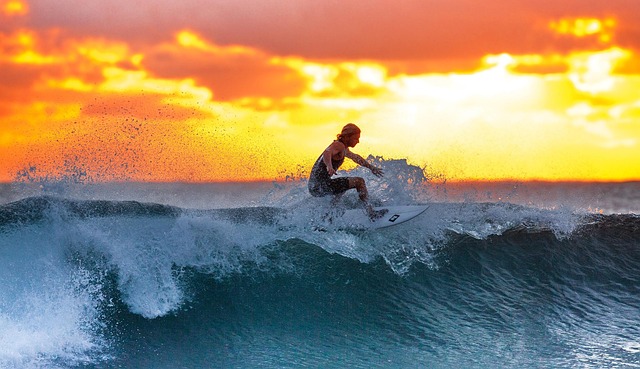
When it comes to surfboards for beginners, customization plays a pivotal role in optimizing your performance. Every surfer has unique preferences and riding styles, so having a board that fits your specific needs can significantly enhance your experience. The shape of your surfboard is a key factor here; you can choose from various options like fish, gun, or classic longboards, each designed for different conditions and skills.
Personalizing your board’s shape allows you to tailor it to your surfing abilities, preferred wave types, and even your body size and weight. For instance, beginners often benefit from a slightly longer board with a rounded nose, offering better stability and balance. As you progress, you might opt for a more streamlined design for faster turns and maneuverability. Customization ensures that your surfboard becomes an extension of your skills, making each ride more enjoyable and efficient.
Choosing the Right Shape: Factors to Consider for Beginners
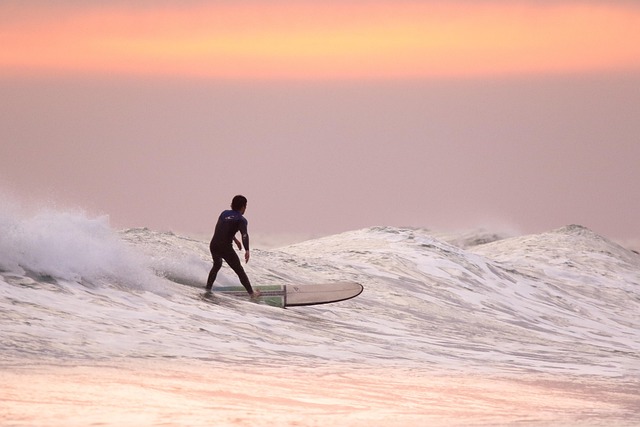
When it comes to selecting a surfboard, especially as a beginner, choosing the right shape is paramount. Several factors influence this decision. Firstly, consider your height and weight; different boards cater to specific ranges, ensuring stability and balance in the water. For instance, shorter boards are generally faster and more maneuverable, ideal for smaller waves, while longer boards offer better stability and are suited for bigger swells.
Another crucial aspect is your surfing ability and preferred style. Beginners often benefit from wider boards that provide more floatation and make catching waves easier. Alternatively, if you’re drawn to performing radical maneuvers, a narrower, more flexible board might be the way to go. Keep in mind that local surf conditions also play a role; softer waves may demand a board with more buoyancy, while harder, faster breaks could require a more precise design.
